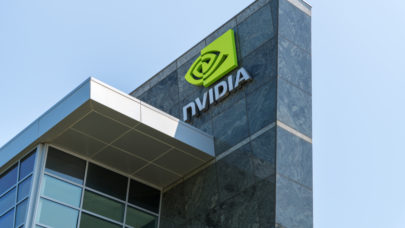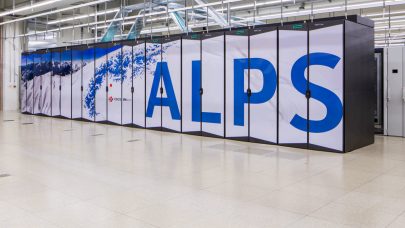
Google Introduces ‘Hypercomputer’ to Its AI Infrastructure
December 11, 2023
Google ran out of monikers to describe its new AI system released on December 7. Supercomputer perhaps wasn't an apt description, so it settled on Hypercomputer Read more…

Nvidia Releasing Open-Source Optimized Tensor RT-LLM Runtime with Commercial Foundational AI Models to Follow Later This Year
September 14, 2023
Nvidia's large-language models will become generally available later this year, the company confirmed. Organizations widely rely on Nvidia's graphics process Read more…

Nvidia Shares Grace Superchip Benchmarks
September 6, 2023
Every vendor releases benchmarks when introducing a new processor. There are lots of application-based benchmarks available for HPC, and to be sure, vendors wil Read more…

Nvidia Announces Four Supercomputers, with Two in Taiwan
May 29, 2023
At the Computex event in Taipei this week, Nvidia announced four new systems equipped with its Grace- and Hopper-generation hardware, including two in Taiwan. T Read more…

Into the Alps: What Exactly Is the New Swiss Supercomputer Infrastructure?
April 5, 2023
About two years ago, the Swiss National Supercomputing Centre (CSCS), HPE and Nvidia announced plans to launch a powerful new supercomputer in 2023 to replace P Read more…

Nvidia’s Hopper GPUs Enter ‘Full Production,’ DGXs Delayed Until Q1
September 20, 2022
Just about six months ago, Nvidia’s spring GTC event saw the announcement of its hotly anticipated Hopper GPU architecture. Now, the GPU giant is announcing t Read more…

NeMo LLM Service: Nvidia’s First Cloud Service Makes AI Less Vague
September 20, 2022
Nvidia is trying to uncomplicate AI with a cloud service that makes AI and its many forms of computing less vague and more conversational. The NeMo LLM service, which Nvidia called its first cloud service, adds a layer of intelligence and interactivity... Read more…

Nvidia, Intel to Power Atos-Built MareNostrum 5 Supercomputer
June 16, 2022
The long-troubled, hotly anticipated MareNostrum 5 supercomputer finally has a vendor: Atos, which will be supplying a system that includes both Nvidia and Inte Read more…

- Click Here for More Headlines

Whitepaper
Transforming Industrial and Automotive Manufacturing
In this era, expansion in digital infrastructure capacity is inevitable. Parallel to this, climate change consciousness is also rising, making sustainability a mandatory part of the organization’s functioning. As computing workloads such as AI and HPC continue to surge, so does the energy consumption, posing environmental woes. IT departments within organizations have a crucial role in combating this challenge. They can significantly drive sustainable practices by influencing newer technologies and process adoption that aid in mitigating the effects of climate change.
While buying more sustainable IT solutions is an option, partnering with IT solutions providers, such and Lenovo and Intel, who are committed to sustainability and aiding customers in executing sustainability strategies is likely to be more impactful.
Learn how Lenovo and Intel, through their partnership, are strongly positioned to address this need with their innovations driving energy efficiency and environmental stewardship.
Download Now
Sponsored by Lenovo
Whitepaper
How Direct Liquid Cooling Improves Data Center Energy Efficiency
Data centers are experiencing increasing power consumption, space constraints and cooling demands due to the unprecedented computing power required by today’s chips and servers. HVAC cooling systems consume approximately 40% of a data center’s electricity. These systems traditionally use air conditioning, air handling and fans to cool the data center facility and IT equipment, ultimately resulting in high energy consumption and high carbon emissions. Data centers are moving to direct liquid cooled (DLC) systems to improve cooling efficiency thus lowering their PUE, operating expenses (OPEX) and carbon footprint.
This paper describes how CoolIT Systems (CoolIT) meets the need for improved energy efficiency in data centers and includes case studies that show how CoolIT’s DLC solutions improve energy efficiency, increase rack density, lower OPEX, and enable sustainability programs. CoolIT is the global market and innovation leader in scalable DLC solutions for the world’s most demanding computing environments. CoolIT’s end-to-end solutions meet the rising demand in cooling and the rising demand for energy efficiency.
Download Now
Sponsored by CoolIT
Advanced Scale Career Development & Workforce Enhancement Center
Featured Advanced Scale Jobs:
HPCwire Resource Library
HPCwire Product Showcase
© 2024 HPCwire. All Rights Reserved. A Tabor Communications Publication
HPCwire is a registered trademark of Tabor Communications, Inc. Use of this site is governed by our Terms of Use and Privacy Policy.
Reproduction in whole or in part in any form or medium without express written permission of Tabor Communications, Inc. is prohibited.
























